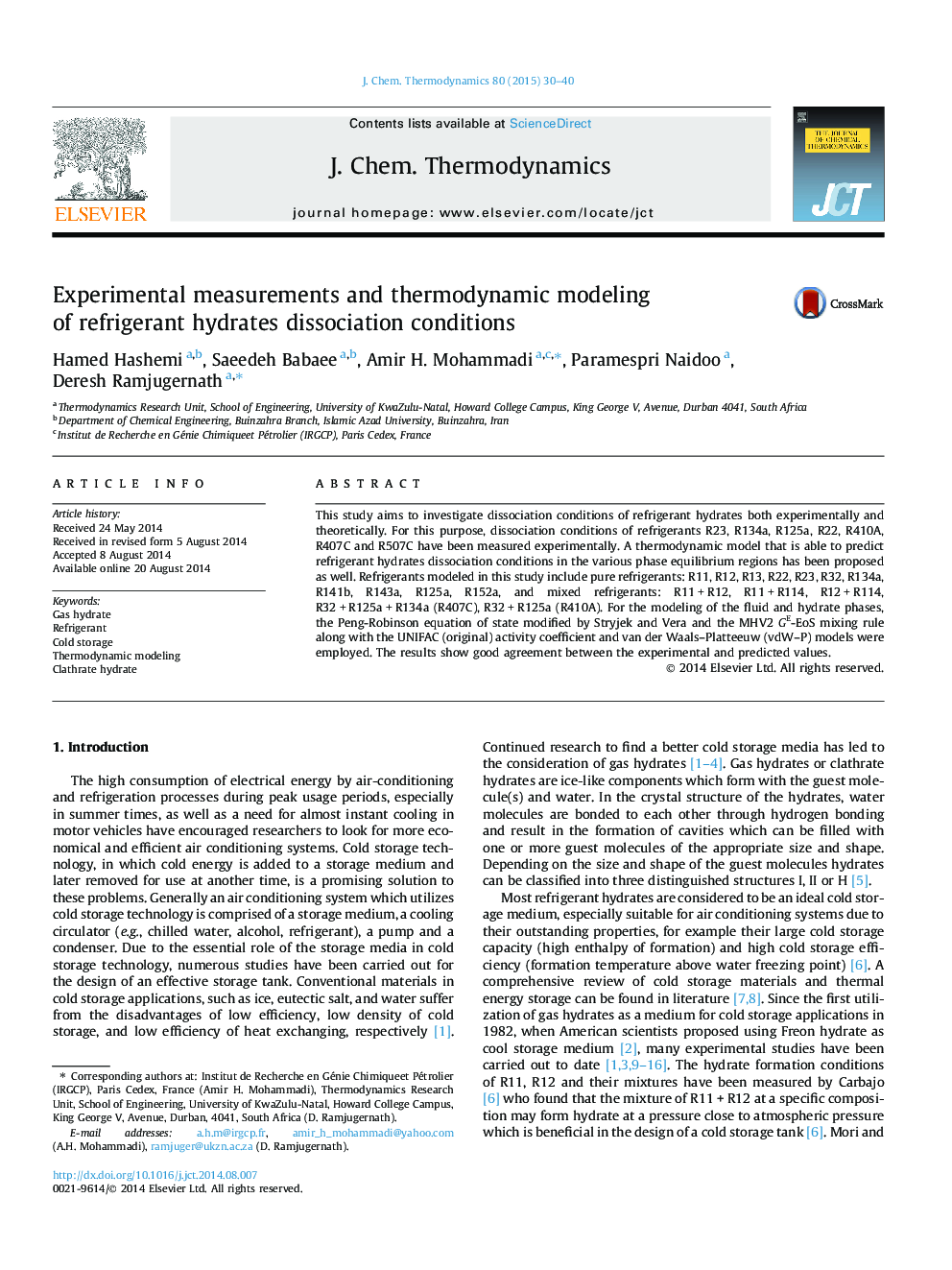| Article ID | Journal | Published Year | Pages | File Type |
|---|---|---|---|---|
| 215267 | The Journal of Chemical Thermodynamics | 2015 | 11 Pages |
•Dissociation conditions of refrigerant hydrates are studied experimentally and theoretically.•Refrigerants R23, R134a, R125a, R22, R410A, R407C and R507C are studied experimentally.•A thermodynamic model able to predict refrigerant hydrates dissociation conditions is proposed.•The results show good agreement between the experimental and predicted values.
This study aims to investigate dissociation conditions of refrigerant hydrates both experimentally and theoretically. For this purpose, dissociation conditions of refrigerants R23, R134a, R125a, R22, R410A, R407C and R507C have been measured experimentally. A thermodynamic model that is able to predict refrigerant hydrates dissociation conditions in the various phase equilibrium regions has been proposed as well. Refrigerants modeled in this study include pure refrigerants: R11, R12, R13, R22, R23, R32, R134a, R141b, R143a, R125a, R152a, and mixed refrigerants: R11 + R12, R11 + R114, R12 + R114, R32 + R125a + R134a (R407C), R32 + R125a (R410A). For the modeling of the fluid and hydrate phases, the Peng-Robinson equation of state modified by Stryjek and Vera and the MHV2 GE-EoS mixing rule along with the UNIFAC (original) activity coefficient and van der Waals–Platteeuw (vdW–P) models were employed. The results show good agreement between the experimental and predicted values.
